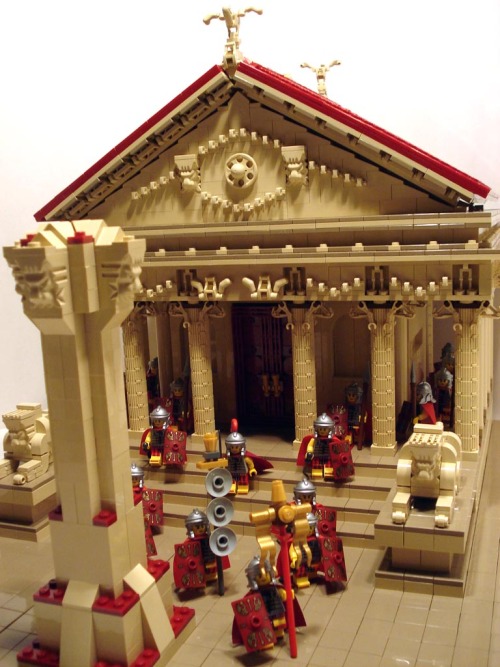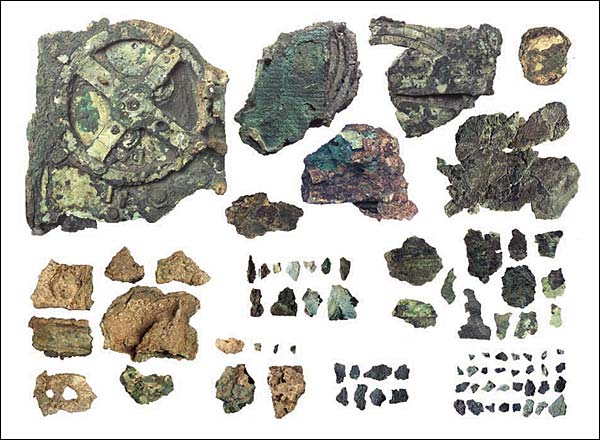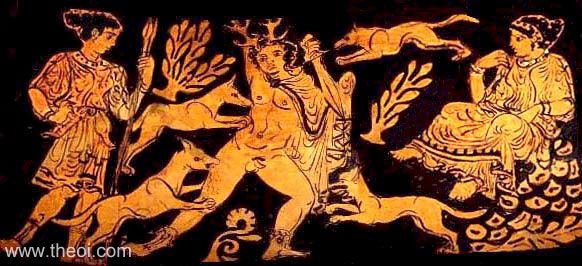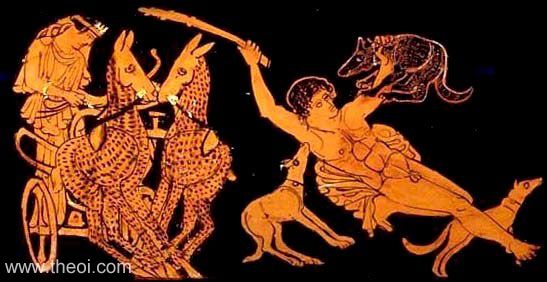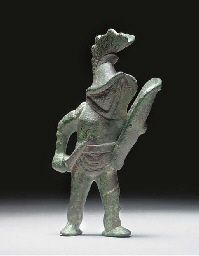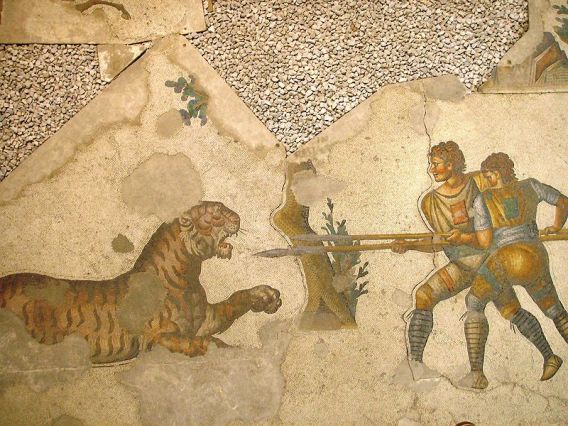 |
| Artistic Design of Summanus by Anonymous Artist |
Since the Ancient Romans were polytheists, they had many gods they needed to appease throughout the year. June 20th, the day before the summer solstice, was actually a holiday for one of their more obscure deities: Summanus.
Summanus was a deity of evening or nocturnal lightning, while Jupiter (or Zeus) was a deity of diurnal or daytime lightning; as St. Augustine attests to in his De Civitate Dei Book IV, Chapter 23: "
diurna Jovis, nocturna Summani fulgura habentur"--- " Daytime lightning(s) were held by Jove, nocturnal lightning(s) were held by Summanus."
*Fulgura is a neuter plural noun, but the word lightnings does not exist in our English vocabulary, but habentur means "were held"- which is third person plural.
St. Augustine furthers asserts concerning Summanus: "
coluerunt magis quam Jovem." "They cared (for Summanus) rather than Jove (Jupiter)." So, it clear that the Romans had a distinct affinity to this deity even over the king of gods: Jupiter. Cicero (De Divinatione Book 1 Chapter 10)
de fulgurum vi dubitare num possumus? Nonne cum multa alia mirabilia, tum illud in primis: Cum Summanus in fastigio Iovis optumi maxumi, qui tum erat fictilis, e caelo ictus esset nec usquam eius simulacri caput inveniretur
Are we able to doubt about the (prophetic) force of lightning? Are there not many other (times) with (this) wonders/miracles? At this time, is the following not especially (an example)? When Summanus ,on the pediment of greatest and best Jupiter, who (Summanus) was then made of clay(i.e a statue), from the heavens it was struck(lightning), and not anywhere was the head of his statue found
In response to this omen, it is said that a temple was built to Summanus near the Circus Maximus.
 |
| Circus Maximus Reconstruction |
 |
| Engraving of Publius Ovidius Naso |
As Ovid wrote in his
Fasti 6 731-732:
quisquis is est, Summano templa feruntur, tum, cum Romanis, Pyrrhe, timendus eras.
A temple was built to Summanus, whoever he is, at that time, when you, Pyrrhus, were a terror the Romans.*
It is clear by this quote that the origin and even the god "Summanus" was somewhat of an enigma amongst his own worshippers and followers.
Summanus may simply be an evolution from summus (highest) and this of course references Mounte Sumano. Curiously, the mountain top is frequently hit by lightning bolts.
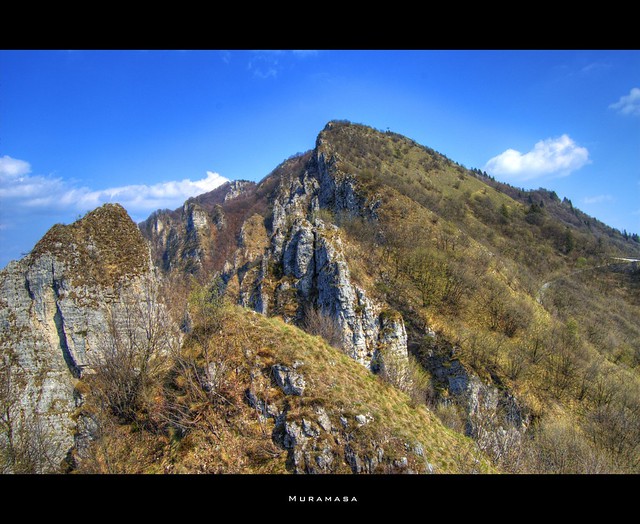 |
| Monte Sumano |
"Archeological excavations have found a sanctuary that dates back to the first Iron Age (9th century BCE) and was continuously active til late antiquity (at least the 4th century CE). The local flora is very peculiar as in ancient times pilgrims used to bring flowers from their native lands (courtesy of Wikipedia no source cited)."
It would be an interesting prospect and thesis to conduct an analysis of every non native flower at Monte Sumano and attempt to reconstruct their origin.
In research for this blog entry, I was attempting to find a picture of at least one flower that may be found on this mountain(Easier said than done!). I made the following discovery:
 |
| Daphne Petraea |
I discovered in
Gardeners Chronicle & New Horticulturist (which is a agglomeration of articles on plants) an article from 1905 on the species of the Daphne (Yes, this is taken from the Daphne who runs away from Apollo). At the bottom of the first column, there is a paragraph dedicated to this wondrous flower. The entry goes "
The plant requires sunshine and calcareous rock. I found it last year on Monte Summano exposed to the hottest sun on the dolomite rocks with hardly any soil. It forces its roots into the living rock and so finds needful freshness and nourishment."
 |
| Daphne Petraea |
As of today, this particular flower is only found in the Alps (where Monte Sumano is) and is a
protected plant since it is rarely found. Due to the fact that this flower is only now existent near Monte Sumano or within a general pollinating area- I would conjecture that the original source from which the flower existed is gone. I would argue, henceforth, that this was one of the many floral offerings brought to the ancient sanctuary and thus one of the peculiar floral populations on Monte Sumano.
Traditionally Mount Sumano (elevation 1291 m.) in the Alps near Veneto, Italy is considered a site of the cult of god Pluto, Jupiter, Summanus and the Manes.
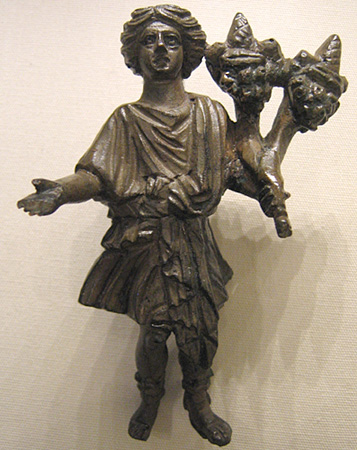 |
Bronze Lar Figurine
Roman, 1st-4th century CE. London, British Museum |
A manus or the manes (plural) were chthonic deities ( deities of the earth or underworld [chthonic] who were usually sacrificed dark animals as opposed to air deities [Olympian] who were offered light colored animals) that were closely resembled of the Lares or household deities. Martianus Capella (
De nuptiis Philologiae et Mercurii Book II, Chapter 164) thought that Summanus was simply another name for Pluto.
Pluto who was the Roman equivalent to Hades was lord of the Underworld and brother of Jupiter (or Zeus). Jupiter traditional being the king of the gods and the male supreme god of the air, ethereal region, and sun. While, Pluto resigned in Hades where he reigned in darkness.
 |
Pluto/Hades with Cerberus
Herkalion Archaeological, Crete
|
Thus the correlation between Pluto and Summanus at Monte Sumano may not be coincidental. Agreeing with Capella, Summanus simply may be a different aspect of Pluto- lightning- which may have been evolved from the duality of the light/day brother versus the dark/night brother.
Summanus Festival: June 20th
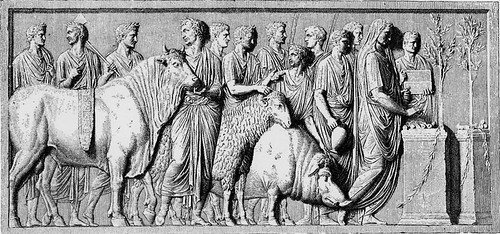 |
| Ancient Roman Festival and Offering Sacrifices |
It is said that on this day round cakes in the shape of wheels were offered to Summanus along with two dark oxen (since he is considered a chthonic deity). The round cakes were usually made from flour, milk, and honey. The wheel has often been argued by scholar to be a solar symbol. However, it is unclear as to why a nocturnal lightning god would relish in solar symbolic cakes.
 |
An Example of a Round Cake that may be offered; perhaps
even glazed with honey. |
 |
Carbonized Bread from Pompeii 1st AD
*Perhaps, this would resemble our wheel round cake |
 |
Pompeii frescoes, 1st c. C.E
Another Example of a Summanlia |
Thus the wheel cakes known as summanalia are not in reference to the deity himself, but the time of year. June 20th is the day before the Summer Solstice . The Summer Solstice being the longest day of the year.
 |
| Diagram of the Solstices and Equinoxes |
Although this last image is Egyptian, I believe it reflect the universal theme of round cakes being offered to deities from 2000's BCE all the way to St. Augustine in 350's CE!
 |
Offering Case For A Round Cake
Egyptian, Old Kingdom, Dynasty 6, 2323–2150 B.C |
Finally, it should be noted that festival for any deity no matter how small or new they were taken seriously. There were taken seriously by those who were pious and fearful of the gods, and by those who wanted to party and have a great barbeque. Sometimes, the animals that were sacrificed after having been killed were eaten by the attendees of the festival and celebration. In modern day, many of us can relate with our various patriotic holidays that somehow call for us to bbq- perhaps this is where the tradition comes from!
 |
| BBQ |
*The Pyrrhic War occurred roughly 270 BC.




